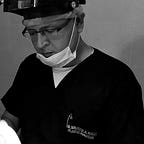DuWhat are the treatment options for diabetic ulcers?
Diabetic foot ulcers are the leading cause of leg amputations worldwide, and there are a number of studies that demonstrate the central role of impaired granulation tissue formation in these chronic ulcers. Thus, it seems reasonable that platelet-rich plasma (PRP) with multiple cytokines/growth factors might turn these stalled ulcers into a more rapidly healing phase, thus closing the ulcer sooner and reducing the need for ultimate amputations.
A number of studies have attempted to demonstrate this benefit. This nicely performed meta-analysis published in a quality wound care journal demonstrates improvement in healing, albeit moderate, as measured by time to complete wound healing and volume reduction. That being said, PRP treatment did not improve the probability of wound complications or recurrences, although it did seem to reduce the rate of adverse events. Allowing for the fact that these are difficult studies to perform for multiple reasons, the authors correctly note that there are “serious methodologic flaws” in many of the previous studies.
I’ve been lucky enough to be involved in the care of patients with chronic wounds for over 20 years. It would be very nice if a new treatment provided miraculous results. So far, nothing has really jumped out to catch my attention as a true game changer. That being said, work with growth factors and other biologic dressings have certainly made a difference in wounds that are not responding to standard conventional therapy. In the world of medical care, especially wound care, there is certainly an art to optimizing the care for individual patients. There are almost always comorbidities and social and psychosocial factors that play into treatment options and compliance. Thus, it is important for physicians to choose treatments that are best for the patient in terms of their ability to afford a given treatment and comply with the regimen that’s been prescribed.
PRP has never been my “go to” preferred treatment for stalled wounds, but that doesn’t mean it is not appropriate in certain cases. I have tended to favor collagen-based products or live cell products when the wound is not responding as I think it should with conventional therapy (moist wound healing, infection control, offloading, and debridement are keys for diabetic foot ulcers). I always like to remind people that a biopsy can also be important to make sure you’re not dealing with a skin cancer or treatable infectious process. It’s also critical to take good photographs to demonstrate whether a wound is improving or not. In the end, especially with respect to diabetic foot ulcers, offloading and debridement are the key components to any regimen designed to promote ulcer healing. Without specific attention to the simple details, more people will suffer amputations than necessary, no matter what “advanced” dressing or procedure is used.
Foot ulcers are one of the major problems of diabetes. About 15% of all diabetic patients may complain from these ulcers. 88% of all leg amputations were related to diabetic foot ulcers . Few decades ago diabetic foot ulcers were treated by vacuum-assisted closure, high voltage pulsed current electrical stimulation and hyperbaric oxygen. Some biological therapies were used in ulcers treatment with improvement of the time of wound healing .In the recent studies, growth factors from Platelet Rich Plasma (PRP) used for enhancing wound healing were compared to conventional therapies. Wound healing started by release of local growth factors which attracted stem cells into wound. PRP decreased cytokine release, and increased capillary growth. PRP has also some antimicrobial effects against Candida albicans, MRSA and E. coli
I would be remiss if I did not encourage more physicians to get involved in the care of patients with chronic wounds. This is a significant problem that really can benefit from multidisciplinary care, including dermatologists, plastic surgeons, vascular surgeons, and infectious disease and primary care physicians. Sending your patient to a specific wound clinic can offer definite advantages in terms of getting the right people together to do proper offloading and documentation, and also offer advanced wound treatments. That being said, we all need to advocate for our patients and make sure that the clinics they attend are staffed with people who are taking a patient-centered approach to clinical care.
